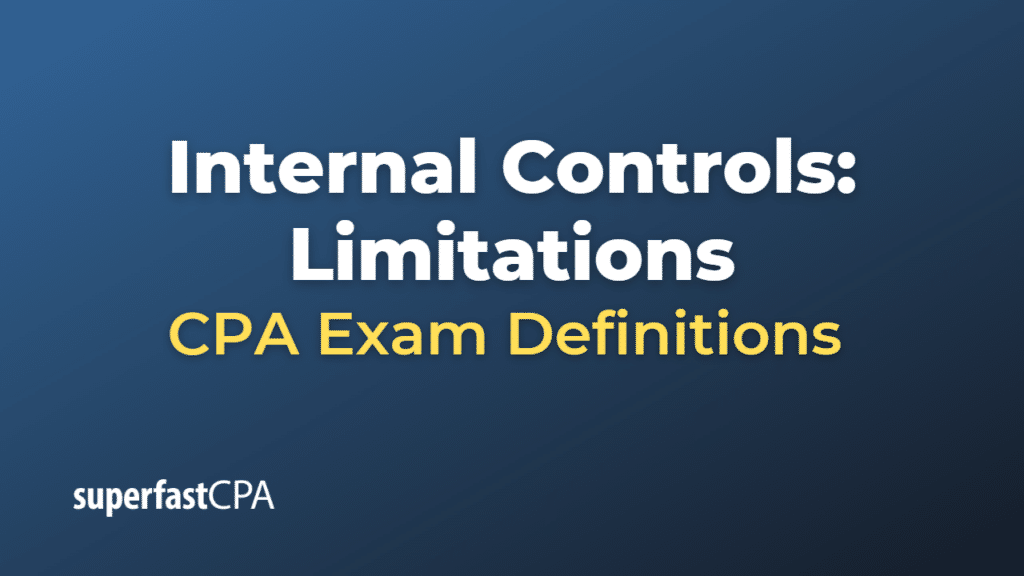Internal Controls: Limitations
Internal controls, while important for mitigating risks and ensuring accurate financial reporting, have certain inherent limitations. These limitations can impact the effectiveness of internal controls and may contribute to the risk of material misstatement of an entity’s financial statements. Some of these limitations include:
- Human error: Internal controls can be subject to human error due to mistakes, misunderstandings, or misinterpretations. These errors may arise from carelessness, distraction, fatigue, or other factors that affect human performance.
- Collusion: Segregation of duties is an essential component of internal controls, but it can be circumvented through collusion among employees or between employees and third parties. Collusion can lead to fraud or errors not being detected by the control system.
- Management override: Management has the authority to override internal controls, which can create opportunities for fraud or manipulation of financial data. This risk increases if management has an incentive to misstate financial information or if there is a weak control environment.
- Inadequate design or implementation: Poorly designed or implemented controls may not effectively prevent or detect material misstatements. This may result from a lack of understanding of the risks or control objectives, insufficient resources, or a lack of expertise in designing and implementing appropriate controls.
- Changing circumstances: Business processes, technology, or organizational structures may change over time, which can render existing controls ineffective or obsolete. Regular monitoring and updating of internal controls are necessary to ensure their continued effectiveness.
- Cost-benefit considerations: Implementing and maintaining internal controls can be resource-intensive, and organizations must balance the costs against the benefits. In some cases, the cost of implementing a specific control may outweigh the potential risk reduction it offers, leading to a decision not to implement the control.
- External factors: Internal controls may be influenced by external factors beyond the organization’s control, such as economic conditions, regulatory changes, or technological advancements. These factors can impact the effectiveness of internal controls or introduce new risks that were not previously considered.
The potential impact of these limitations on the risk of material misstatement of an entity’s financial statements can vary. If internal controls are not effective in addressing identified risks, auditors may need to modify their planned audit approach, perform additional audit procedures, or rely more heavily on substantive testing to obtain sufficient appropriate audit evidence. Additionally, the auditor should communicate identified control deficiencies to management and those charged with governance, as well as consider the implications for the auditor’s report if material weaknesses in internal control over financial reporting are identified.













